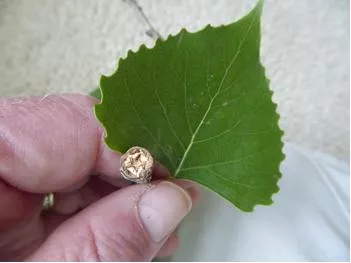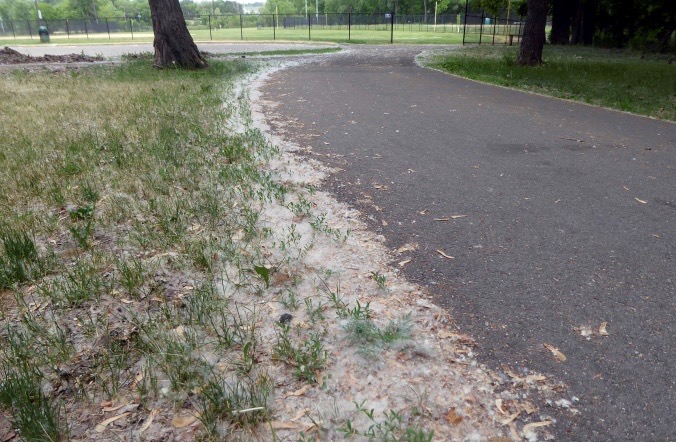
Photo Credit: Bob Suchanek
Bob Suchanek, Water and Wetlands Steward
"...if the Spirit-Of-The-Night-Sky needs more stars it calls upon the Wind Spirit, who blows and causes cottonwood twigs to break, releasing their stars to heaven." - Cheyenne and Arapahoe Legend
If you break a cottonwood twig in half you may reveal the star-shaped tissue that serves the tree as food storage and transport as well as defining its connection to the stars. The distinctive delta-shaped leaves make the eastern cottonwood, Populous deltoides, easy to identify and the flat leaf stems allow for a musical clatter and spirit in the breeze.
Cottonwood trees are related to many other willow family trees commonly called poplars, including quaking aspens (Populous tremuloides), balsam poplars, and imported European poplar species. Populous and poplar are references to the Roman tendency to plant these sorts of trees around public meeting places.
When the spring bloom comes to an end and the trees develop leaves, female cottonwood trees release thousands of seeds in a blizzard of cotton from drooping clusters called catkins. Each tiny seed has the potential to become a giant. Cottonwood trees typically grow to over 50 feet tall with a diameter of at least 3 feet but may grow much larger. The largest cottonwood tree in Minnesota measures 106 feet tall with a diameter of about 10 feet. Cottonwood and poplar trees in general grow rapidly but usually don’t live much more than 70 years.

The wood of the cottonwood is of poor quality, too soft for enduring construction. However, the tree is held to be sacred by Indigenous people for its spirit, utility, and healing properties. The anti-inflammatory nature of its salicin-filled buds, leaves, and bark is well understood and appreciated.
Cottonwood is a drought-resistant survivor that can provide resources where few other options are available. Theodore Roosevelt built his ranch house in North Dakota out of cottonwood and the Lewis and Clark expedition was taught how to make cottonwood dugout canoes by Indigenous people. Both projects are long gone tributes to immediate needs met by this sacred tree filled with stars.
Sources
Lee, Annette S., Rock, Jim, O’Rourke, Charlene. D(L)akota Star Map Constellation Guide, An Introduction to D(L)akota Star Knowledge. Annette S, Lee, Jim Rock, and Charlene O’Rouke, 2014.
ISBN 978-0-692-23254-5
https://www.dnr.state.mn.us/trees/cottonwood.html
https://www.montananaturalist.org/blog-post/the-importance-of-a-cottonwood-twig/
https://www.britannica.com/plant/poplar